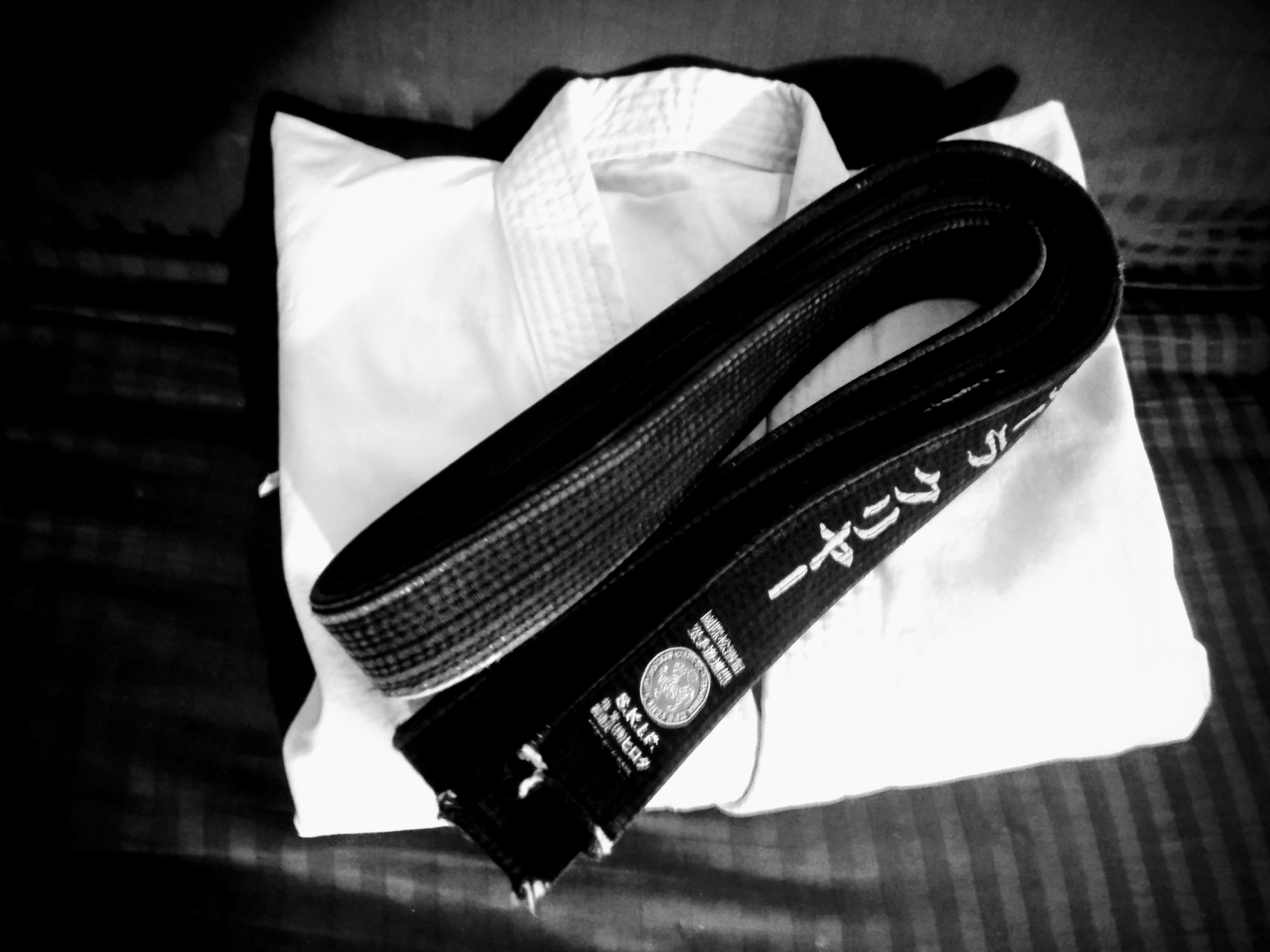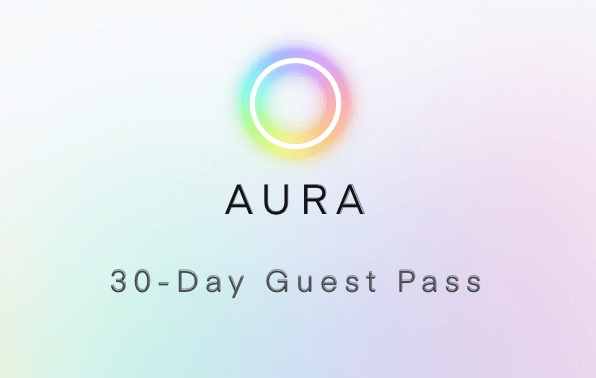Just over seventeen years ago, I did my first black belt grading and I recently stumbled across an essay that my sensei at the time requested as part of the examination process. Although it in many ways resembles something you’d be asked to write by your English teacher towards the end of secondary school, especially with regard to the title, I’ve decided that it is not entirely excruciating and am offering it here as a point of karate introduction to the uninitiated, or as a point of conversation for those who have at any time set foot inside a dojo. Seventeen years down the line, some of my views have shifted a little, but fundamentally the same principles apply. I have attached a glossary at the bottom of the post to shed light on the Japanese terms used throughout.
What Achieving Shodan Would Mean To Me
Next Sunday morning in a sports hall in Cork, I will undergo a physically and psychologically gruelling examination such as I have never experienced before. If I satisfy the requirements of those judging me, it will be a defining moment in my karate career. Ten years after first setting foot in a Shotokan dojo, I may walk away the proud bearer of that fabled grade – black belt.
The world of martial arts is subject to many misconceptions by non-practitioners, and no misconception is more common than the supposed ‘invincibility’ of a black belt holder. As a child, I too was guilty of this, and like many others I indulged in fantasies of being a black belt and felling terrifying adversaries with consummate ease. I supposed even a passing acquaintance with any martial art would be enough to equip me for any unpleasant confrontation. Many years later when I finally did find myself donning a gi and training with other karateka for the first time, I discovered, as is invariably the case, that the fantasy was a far remove from the reality. This did not serve as a deterrent, however, rather my fascination and my desire to learn increased as soon as I was exposed to the complexities of negotiating beginners’ kihon, kumite, and kata. The fantasy disappeared immediately as all I could focus on was the instant. Striving to keep up with the rest of the students; struggling to come to terms with techniques like mawate and gyaku-zuki; not to mention being utterly confounded by instructions given in Japanese. I had no time to dream about martial acrobatics or Bruce Lee-like dexterity! The training exerted its magnetic hold on me from the first and it has been that magnetism that has ensured that I have never strayed away from the dojo for too long.
Ten years is well above average in terms of time spent training for black belt, or shodan. Usually, this rank in karate can be attained after four to six years of training. Because of the sometimes sporadic nature of my own training, I have often reflected on the path I have chosen. Perhaps because I was a little bit older when I started karate, I always found that I wasn’t particularly motivated by gradings. That is to say, it was not gradings that motivated me to train but rather the training was a reward in itself. When a grading came up I would always be delighted to present myself, but if the opportunity did not arise, I was unperturbed. My prime focus was self-improvement. Now when I am standing on the cusp of being awarded the grade of shodan, self-improvement is the concept that comes to mind again. If I am successful in my efforts next week, I can’t begin to describe the pride I will feel. I have always tried to train for myself, and it will be the result of my efforts alone that can present me with a black belt. This is not to detract from my senseis for one second. Without their guidance and encouragement I could never have channelled myself in the same way. But in the end, the responsibility was no one else’s but my own. The sensei will show the student the tools and the medium; it is up to the student to make the art.
And this is what karate-do has symbolised to me; the acceptance that the artist’s work is never complete. As in life, you never ‘arrive’. We are in a state of perpetual motion until we draw our last breath. But unfortunately our Western society pushes us towards so many goals and objectives that we are constantly either focussing on what has yet to happen or else ruing missed opportunities. It appears to me that most Eastern philosophies recommend we do neither; they suggest living in the present. And does not karate do the same? The important thing for a karateka is the subscription to karate-do, not an obsession with reaching a high rank many years down the road. Concentrate on being the best you can be in this moment in time, and be assured that the best you can be will always be different at a different point in time. Art is never a finished product, it is an ongoing process made up of thousands of connected instants. All you can do is be present. I could claim that my years in and out of dojos have all been a preparation for this one shodan examination and that this will be the culmination of my karate training, but I do not believe this to be the case. Doubtless, when I step up to grade next week, the lessons I have learned with different senseis and students will be etched on me in one way or another, but those lessons will continue to define me long after the grading has ended. And I trust I will have many more lessons to learn.
It is an oft-quoted saying in karate that “black belt is not the end; it is just the beginning”. I have never felt more aware of this than in the last twelve months. I have pushed myself reasonably hard in my preparation for this grading and I will be truly jubilant if I am a successful candidate but I do not think there will be a sense of the aforementioned ‘arrival’ or indeed, I will not be considering myself ‘the finished product’. If I have learned anything in the last year, it’s that everything prior to shodan, regardless of how it takes to get there, is nothing less or more than a template for a true understanding of karate. This to me is an absolutely vital concept. It requires acceptance, patience, and trust. It is also, therefore, one of the most exciting times in my karate life. It feels like an apprenticeship has been served and now the first forays into hallmarking one’s own craft can commence.
I think a trade or craft analogy is very appropriate because karate is primarily, in name at least, about the use of the hands. Karateka then, are tradespeople if you will, and for me no higher compliment can be paid because the pressures of modern living have created a separation from things older and earthier, from connections more primal and universal, that are about contact with wood and stone, that are about using the body in an active, life-giving way. And as in all trades, there is the master craftsman, the master tradesman, and karate proves no exception. Masters are constantly present in spirit if not always in body and they lead by practical example on the dojo floor and in their writings. Who can fail to be inspired by the achievements of Gichin Funakoshi, of Hirokazu Kanazawa, of Stan Schmidt, and of numerous others whose names evoke awe and reverence. Karate-do is an agreement and a pact not to dishonour the work of those who have gone before. It is more than that; it is also an attempt to emulate the great masters and to return their gifts by valuing karate as a living, breathing way of life. Training hard and training with honesty is an expression of gratitude to masters past and present. Crucially, it is also an expression of respect for your self.
In an ideal world, that respect for self should be ever present in all aspects of one’s life. This is rarely going to be an easy thing to achieve but if you can subscribe to karate-do it may become a very tangible reality. “Seek perfection of character” is one of the dojo-kun, or principles of the dojo. Is this perfection sought through the rigorous demands of Shotokan training? I think the answer is yes. All martial arts hold a philosophical trinity at their core. This is the attempt to harmonise the body, the mind, and the spirit into one potent whole. This is not something that will happen overnight or over a couple of years; it is the aspiration of a life’s work. Presenting yourself for one grading after another and doing all the training in between is surely an acceptance of this aspiration. To continue to present yourself to the scrutiny of your sensei, your examiners, your fellow students, and most importantly, to yourself, is a mark of respect and of an acceptance of the challenge of the unknown. That unknown is life. It is also the unknown of the self. The student is striving towards an ideal, and that ideal exists on a physical, a spiritual, and a mental realm. I would like to think that making myself even eligible for a shodan grading is an achievement in itself.
Since I started studying Shotokan karate, I have always been fascinated and impressed by the etiquette and sense of ceremony and respect that has been present wherever and with whomever I have trained. It is this aspect of Shotokan that I feel has played a constant role in my life, and has a role to play in the life of a modern society. Society is perpetually changing and there are always going to be movements away from what is considered ‘out-of-date’ or obsolete. In Western society today, that movement seems to be away from fundamental principles of respect and goodness. It seems that a gap has emerged in what is being taught to today’s children. There seems more and more to be an absence of any sort of morality or common decency among the civilians of the new millennium. Racism, sexism, prejudice, bigotry, avarice and blatant selfishness pervade our ‘global village’. In a decade of karate training, the dojo has rarely, if ever, failed to provide an anti-dote to this malaise. If a Shotokan dojo can be regarded as a microcosm of society, where better to find a blueprint for harmonious living than among a group of people of different ages, opposite sex, different religious beliefs, different colour, with hugely varying skills, talents and qualifications, willing themselves forward together to improve as human beings in an atmosphere of mutual respect, encouragement, and endeavour.
And what better reward than to achieve the rank of black belt, that will say of you that you have persevered and you have overcome. And that will say you are not afraid to continue the journey. It will say that you are a martial artist and that your art is only beginning. It will say that you are chasing an ideal, and in your efforts to do so, you are walking forward into life with awareness, with focus, and in harmony within and without. This is what achieving shodan would mean to me.
Dara Clear, 20th October 2002
Glossary
Shotokan – Shoto’s Place (Shoto was the pen name of Gichin Funakoshi, the pioneer of formalised Shotokan karate)
Shodan – first rank of black belt, also known as 1st Dan
Karate – empty hand
Karate-do – the way of the empty hand
Karateka – practitioners of karate
Dojo – training hall of the way
Gi/Dogi – uniform of the way
Sensei – teacher, or ‘one who has gone before’
Kihon – basic techniques
Kumite – sparring/partner work
Kata – forms/patterns
Mawate – basic turning step
Gyaku-zuki – reverse punch



